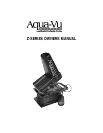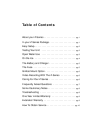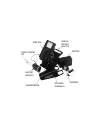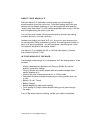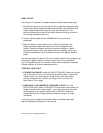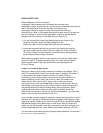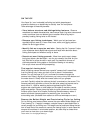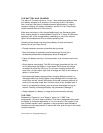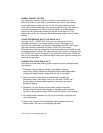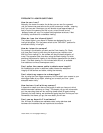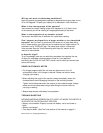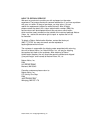
OPEN-WATER USE
Ballast Weights and Front-viewing Fin
Underwater video cameras may be lowered into the water from
breakwaters, docks, and fishing piers, as well as from anchored boats and pon-
toons. Innovative bank fishermen use them, too. Much of the
open-water viewing by anglers is done from boats while drifting or
slow-trolling on lakes, or from boats dealing with stream current. For best con-
trol of the camera in most of these open-water situations, use the Ballast
Weights and Front-viewing Fin included with your Aqua-Vu Z.
1. Line up the predrilled holes of the ballast weights with those on the
camera's underside. Attach the Ballast Weights to the
camera by means of the two steel bolts and two nylon locknuts.
2. Locate the two predrilled holes at the rear of the camera and use the
two nylon screws and two nylon locknuts to attach the Front-viewing Fin.
(The Front-viewing Fin helps maintain a forward-looking viewing posture
as the camera moves through the water.)
When attaching weights and fin to the camera, notice that the holes match,
but with a "tight fit" to prevent accidental loss. The nylon locknuts require
tightening with a pliers. Note: We recommend removing weights and
fin for ice fishing.
Lower the camera and view!
Begin your viewing trip by simply lowering the camera to the bottom. (Don't
worry! The camera won't break if you bump a rock or suddenly "hit bottom.")
In most waters, fish relate to bottom structure. So, while drifting or
slow-trolling, you'll need to guide the camera over the ups and downs of
bottom contours.You will quickly learn how to "swim" the camera over
bottom terrain. With cable in hand, simply raise or lower the camera,
paying out more or less cable depending on depth and boat speed. As you
move along, you should see on your monitor screen a continuous picture of
the passing bottom and the fish-holding watery zone just above it. When
viewing over soft bottom, make sure the camera is actually above the
bottom and not plowing or "stirring up" the muck. Remember, if you can't see
bottom, raise or lower the camera to "look" for it.
If your camera becomes snagged, maneuver the boat so the direction of pull is
the same as it was when the camera became snagged. A little jiggling or light
tugging will usually enable you to back the camera out of a snag. Avoid pulling
the camera through heavy weed cover or thick brush. With your Aqua-Vu Z
model, you will be fascinated, and often surprised, by the ever-changing "live"
view of underwater scenery: rocks, weeds, other bottom features - and fish!
(For more advice and viewing tips see Frequently Asked Questions in this manual.)
Nature Vision, Inc. © Copyright 2000 Pg 3



